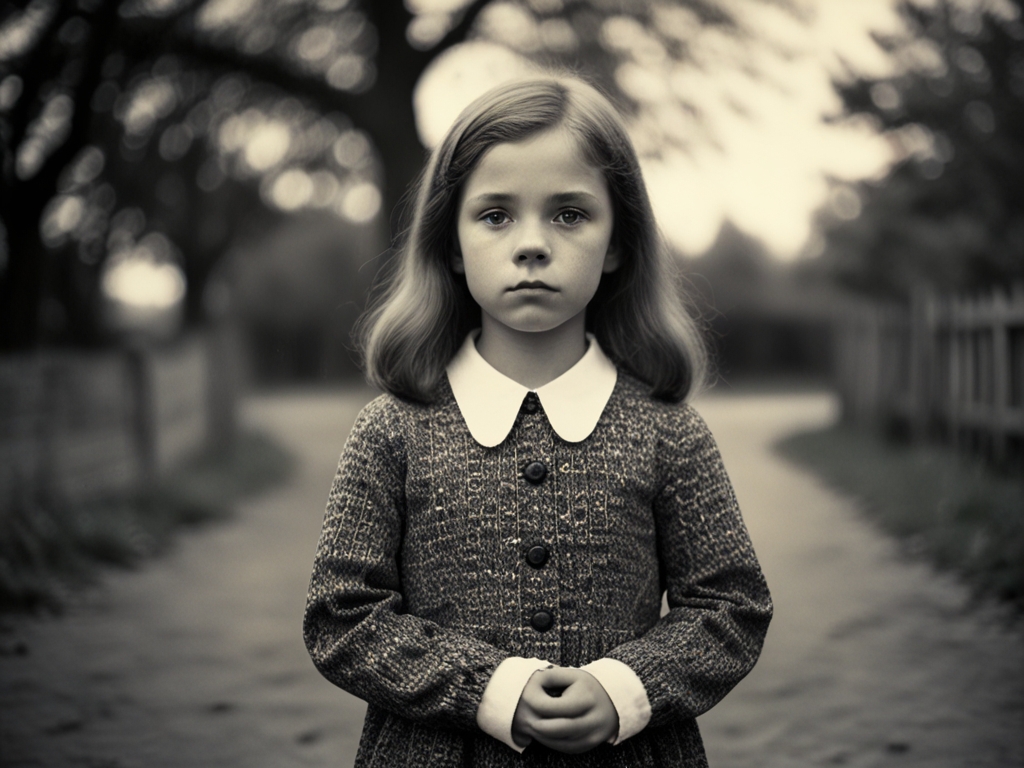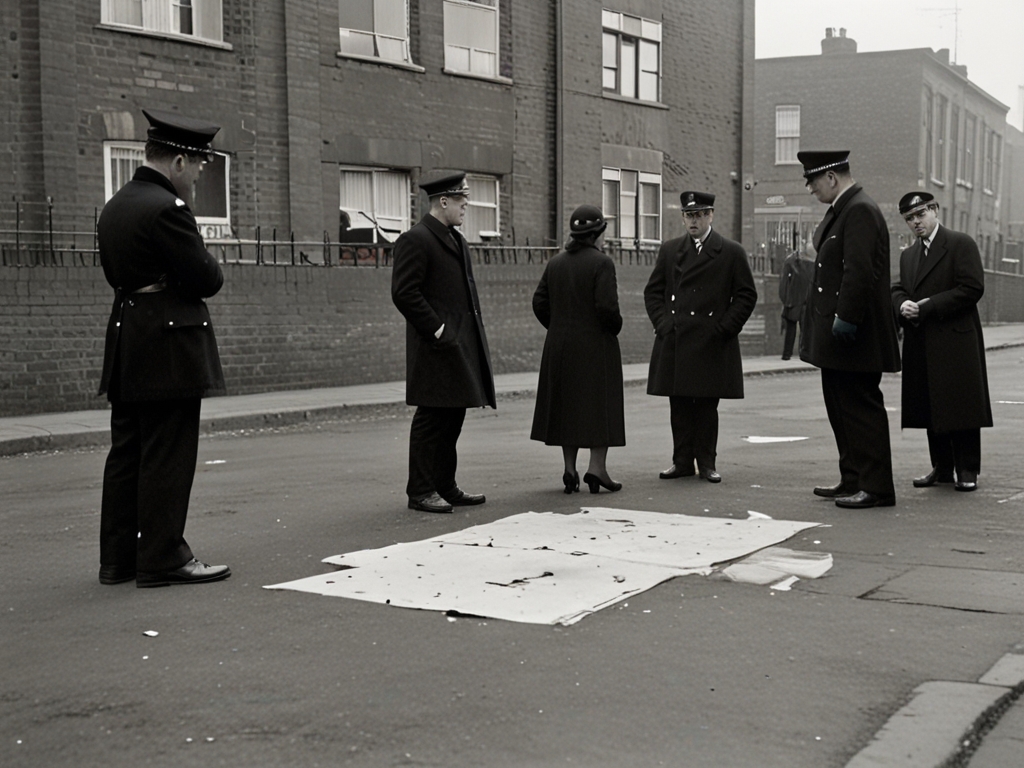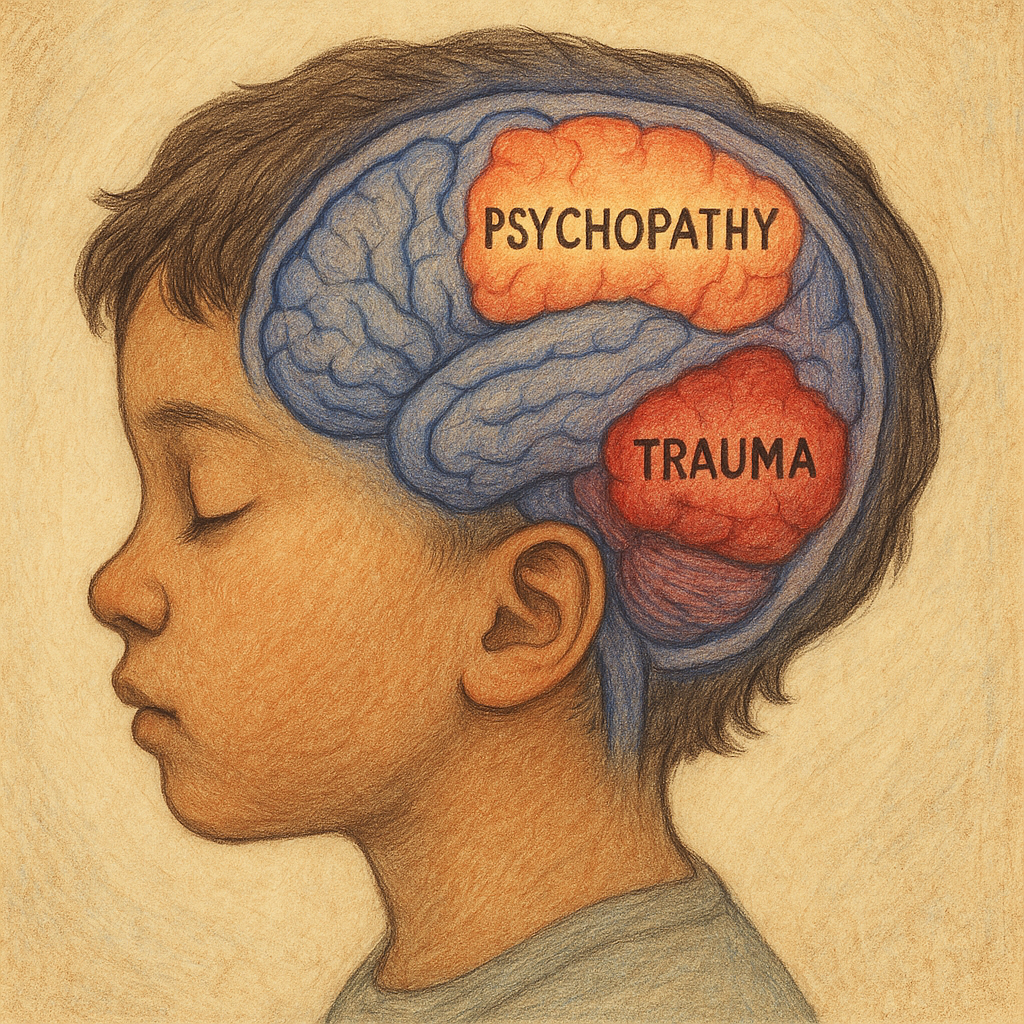It’s hard to imagine a child as a killer. But in 1968, the UK was shaken to its core by the mary bell case so chilling that it’s still studied by psychologists, criminologists, and the media to this day. At just 11 years old, Mary Bell committed two shocking murders, leaving behind a trail of fear, confusion, and an entire country questioning the nature of innocence.
🧒 Who Was Mary Bell?

Mary Flora Bell was born on May 26, 1957, in the Scotswood area of Newcastle upon Tyne, England—an impoverished and rough neighborhood, where crime and hardship were daily realities. Her early life was marked by instability, neglect, and abuse—conditions that would later play a crucial role in one of the most disturbing child crime cases in the UK.
Mary’s mother, Betty Bell, was a teenage sex worker known for her erratic behavior and frequent disappearances. Mary’s biological father was largely absent, and for years, she was raised in a chaotic household with multiple men coming and going. Several reports and later testimonies revealed that Betty often tried to give Mary away, even allegedly attempting to kill her on more than one occasion through overdose incidents that were passed off as “accidents.”
By the age of four or five, Mary had already experienced emotional abandonment, possible sexual abuse, and exposure to criminal behaviors. Neighbors and school staff noted her aggressive tendencies, erratic mood swings, and disturbing behavior toward other children and animals. But in an era when child welfare systems were underdeveloped, these warning signs went largely unaddressed.
Despite these circumstances, Mary was described by teachers as intelligent, articulate, and even charming at times. This contrast—between her trauma-ridden background and her sharp intellect—would become a haunting aspect of her later trial. How could a child who showed such potential fall into such darkness?
The Mary Bell case, as it would later be known, began not just with the tragic murders she committed, but with the environment that shaped her. Her childhood serves as a harrowing example of how neglect, abuse, and a lack of psychological intervention can warp the emotional development of a child—and, in some cases, lead to devastating outcomes.
🔪 The Mary Bell Case: Two Murders That Shocked the Nation

In May 1968, just before her 11th birthday, Mary strangled Martin Brown, a 4-year-old boy. Initially, the death was ruled accidental due to a lack of physical evidence. However, just weeks later, Mary and her friend Norma Bell (no relation) killed Brian Howe, age 3.
This time, the signs of violence were unmistakable. Brian’s body was mutilated, and an “M” was carved into his stomach—suspected to stand for Mary. She also cut off some of his hair and left bite marks. These gruesome details revealed the depths of her psychological disturbance and raised new questions about juvenile crime.
😨 What Made Mary Bell Different from Other Child Offenders?

Most child offenders act impulsively or in response to immediate emotional stress. But what made the Mary Bell case particularly chilling was the deliberation, manipulation, and emotional coldness she exhibited — traits extremely rare in someone so young.
From the beginning, investigators were struck by how Mary reacted to the deaths of the boys. While others expressed horror or sadness, Mary seemed strangely calm — even curious. She returned to the crime scenes repeatedly, asked investigators probing questions, and even attempted to insert herself into conversations about the murders.
In the days after Brian Howe’s murder, Mary showed detectives the location of his body under the guise of “just helping.” Later, forensic teams found that she had carved an “M” into his stomach with scissors and mutilated his body — actions that require a disturbing level of control, intent, and lack of empathy.
According to forensic psychologists at the time, Mary Bell showed clear signs of psychopathy, despite her age. She displayed:
-
Lack of remorse
-
Manipulative tendencies
-
Cruelty to animals and other children
-
Highly developed verbal intelligence
-
An ability to lie with confidence and consistency
In fact, what separated Mary Bell from typical juvenile offenders was not just her violent behavior — but her ability to understand the consequences and still choose to carry them out. She even left notes at the first crime scene, taunting police. These weren’t the acts of a confused child in panic — they were calculated.
Moreover, the Mary Bell case highlighted a rare but important profile in criminology: the “child sociopath.” Such cases are often only diagnosed in adulthood, but Mary’s clinical evaluation revealed traits consistent with early-onset antisocial personality disorder — something almost unheard of in an 11-year-old.
Yet, it’s also important to remember: Mary was not born in a vacuum. Her upbringing was deeply traumatic. Some experts argue that her emotional detachment was a form of psychological survival — a way to cope with relentless abuse, abandonment, and pain.
In that sense, what made Mary Bell different was not just what she did — but how clearly her actions were shaped by both innate and environmental factors. This complexity is what keeps the Mary Bell case relevant even today — as a tragic blend of horror, psychology, and missed warning signs.
⚖️ The Trial: Was Mary Bell Evil or a Victim?
Mary was tried in December 1968. The court charged her with manslaughter due to diminished responsibility. Psychiatrists testified that she lacked empathy, displayed signs of sociopathy, and had experienced a toxic home environment. Her friend Norma Bell was acquitted, but Mary was found guilty and sentenced to indefinite detention in a secure children’s facility.
The Mary Bell case divided public opinion — was she truly evil, or merely a product of abuse and neglect?
😱 How the Public Reacted to the Mary Bell Case
The Mary Bell case generated shockwaves across the UK. Never before had the nation seen such a young child commit such brutal crimes. Public reaction was intense: some called her a monster, while others blamed the system and her abusive upbringing.
Tabloids painted her as a cold-blooded killer, while politicians and child welfare experts debated reforms. Her case became a catalyst for discussions on how to handle juvenile crime in the UK—not just in courtrooms, but also in schools and social services.
🔒 Where Is Mary Bell Now?
Mary Bell was released in 1980 at age 23 and granted full anonymity under British law. She later became a mother and was granted extended legal protection for herself and her daughter.
The exact answer to “Where is Mary Bell now” remains protected by law. Any disclosure of her current identity or location is considered a criminal offense in the UK. This legal shielding reflects ongoing tension between public safety, rehabilitation, and the right to privacy.
🧠 Psychological Debate: Nature vs. Nurture
The Mary Bell case has become a landmark in the ongoing debate over nature versus nurture. Was Mary born with a predisposition toward violence, or did her brutal upbringing turn her into a killer?
While some researchers argue she fits the profile of a sociopath, others suggest her behavior was a tragic reaction to extreme trauma. The case is now regularly referenced in legal courses, psychology programs, and criminology research as a critical example of early intervention failure.
🎥 Media Coverage and Documentaries

The media continues to revisit the Mary Bell story. Books like “Cries Unheard” by Gitta Sereny, and various documentaries have analyzed her actions, trial, and aftermath.
However, many criticize this coverage as exploitative. Victims’ families have repeatedly asked for peace, arguing that repeated media portrayals reopen old wounds. Despite this, public fascination with the Mary Bell case remains strong, especially in the age of true crime podcasts and streaming shows.
📝 Final Thoughts
The Mary Bell case forces us to confront difficult questions about crime, trauma, and responsibility. Is a child born with the capacity for evil? Or are they shaped—often broken—by their environment?
Even decades later, we still don’t have a clear answer. What’s certain is that the story of Mary Bell continues to influence child protection policies, psychological studies, and societal attitudes toward young offenders. It reminds us that behind every crime, there may be a deeper tragedy waiting to be understood.
❓ Frequently Asked Questions
Who was Mary Bell?
Mary Bell was an 11-year-old British girl who killed two young boys in 1968. The Mary Bell case shocked the UK due to her age and the nature of her crimes.
What crimes did Mary Bell commit?
Mary Bell strangled two children: Martin Brown and Brian Howe. The murders were violent and deliberate, making the Mary Bell case one of the most disturbing in British history.
Was Mary Bell mentally ill?
Experts concluded she suffered from emotional disturbances, possibly psychopathy, rooted in early childhood trauma. Her behavior during and after the crimes pointed to severe psychological issues.
Where is Mary Bell now?
Mary Bell was released in 1980 with full anonymity. Her identity is protected by UK law, and her whereabouts remain unknown.
Why is the Mary Bell case still discussed?
The Mary Bell case continues to influence debates on child psychology, juvenile justice, and the ethical limits of media coverage on child criminals.
💡 Author’s Note:
This article is written for educational and informational purposes. All known facts are sourced from verified reports and public records. Out of respect for the victims’ families and legal protections, this article does not speculate beyond the available evidence.



💭 Join the conversation on the Mary Bell case.
Have a perspective on juvenile crime, child psychology, or the UK legal system? Comment below and contribute to this ongoing true crime discussion.